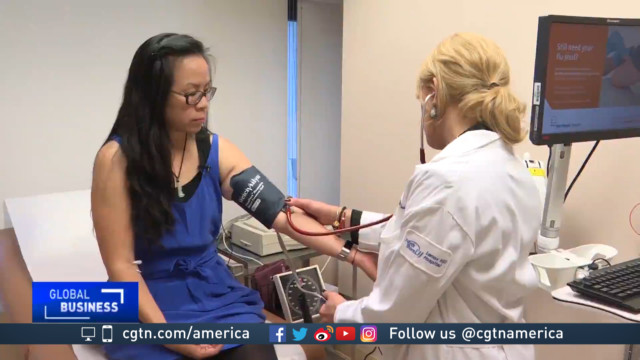High blood pressure is the main cause of heart disease and stroke and is one of the leading causes of death worldwide. The World Health Organization estimates it kills 7.5 million people per year and many of those deaths are preventable.
In the U.S. leading health organizations have just lowered their blood pressure guidelines in the hopes of saving more lives.
CGTN’s Karina Huber reports.
46-year- old Chi-Chi Bestmann has high blood pressure. It was triggered by her first pregnancy nine years ago but there’s also a genetic component. “My parents both have it. My younger brother has it. So I think it’s kind of hereditary,” Bestmann said.
As a working mother to two children, she also has a hectic life, Stress is a contributor to high blood pressure. Over the years, she’s managed to stabilize things through medication but in recent months, her blood pressure has gone up. “It makes me anxious and really irritable, I should say, when my blood pressure is high. I can feel it. I can really feel it and it’s like something takes over me and I don’t like that feeling.”
In the past four decades, the number of people with high blood pressure has almost doubled to over a billion globally. The numbers could be even higher, as many don’t know they have it.
“We call it the silent killer. You cannot feel it and you do not know you have high blood pressure unless you get it checked,” cardiologist Suzanne Steinbaum explains. High blood pressure or hypertension can lead to heart attacks, strokes and severe kidney disease. The World Health Organization estimates it kills 7.5 million people annually. A recent study showed more than half of adult cases are in Asia. China has 226 million people with high blood pressure. India has 200 million.
In the United States, the numbers are dropping but it’s still the second leading cause of preventable death. Health organizations are working to lower the numbers even further. For the first time in 14 years, the American Heart Association and ten other groups have lowered the threshold for high blood pressure from a reading of 140 over 90 to 130 over 80.
Under the new guidelines roughly 46 percent of U.S. adults will be considered hypertensive. The change comes after a large-scale study in 2015 that shocked the medical community. It found that the risk of life-threatening conditions begins at a reading of 130 NOT 140. An ideal reading is 120 or below.
Steinbaum says the first line of defense is lifestyle changes – like exercise, diet and stress management. Those at higher risk should go on medication.
Bestmann checks her blood pressure several times a day. She says it’s on her mind all the time, for good reason. “I want to be there for my children. They’re still young. Seven and nine, you know. So I want to make sure I’m healthy so I can do more things”.
Dr. Steinbaum says the best way to avoid potentially getting a heart attack or stroke is to get your blood pressure checked and take it from there.
Robert M. Carey on the new blood pressure guidelines in the U.S.
 CGTN America
CGTN America

